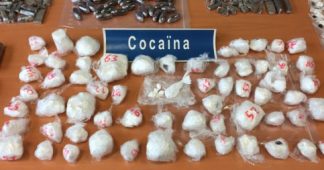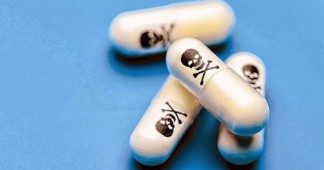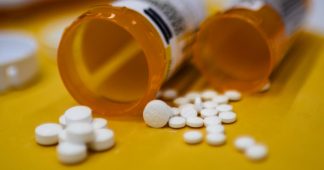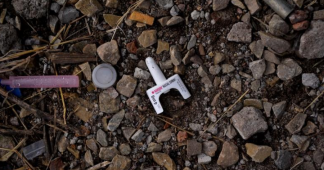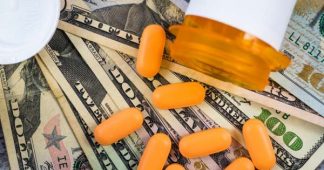By Frank Owen,
author of ‘Clubland: The Rise and Fall of Club Culture,’ ‘No Speed Limit: The Highs and Lows of Meth’ and the forthcoming ‘Booze, Blood and Noise: A Personal History of Manchester Punk.’
18 May, 2020
Now that deaths because of opioids are plateauing in America, another reborn epidemic is poisoning the country’s drug users. It’s polydrug use – the mixing of substances that catalyze each other in a spectrum of deadly cocktails.
According to USA Today, a new super-potent form of methamphetamine, dubbed Meth 2.0, is sweeping across America. The newspaper claims Meth 2.0 is behind a steep rise in methamphetamine use that has led to a sharp increase in fatalities. The Atlanta-based Centers for Disease Control and Prevention reports that overdose deaths involving methamphetamine have recently spiked by twenty-two percent.
Yet, the latest National Survey on Drug Use and Health, the gold standard of American drug surveys, reveals that the total number of people using methamphetamine is almost exactly the same as 2015 and 2017, and only slightly higher than 2016. The latest Monitoring the Future survey, which surveys only adolescents, records a small drop in methamphetamine use among young people, part of a continual decline since its peak in 2000.
So what is going on? How can meth use be stable or declining at the same time as meth-related deaths are skyrocketing?
The answer lies in a phenomenon largely ignored by mainstream journalists: polydrug poisoning.
“Most drug overdose deaths in the U.S. involve drug mixing,” says Kenneth Anderson, the executive director of the HAMS Harm Reduction Network, a New York-based non-profit that helps people who want to reduce the harmful effects of their alcohol and drug use without completely quitting drugs.
“Data from New York City found drug mixing in over ninety percent of deaths,” adds Anderson.
The deadly mixes
The real story is not that meth is back (it never went away), or that meth is more powerful (the pseudoephedrine-based formula that drug cartels use to manufacture methamphetamine hasn’t changed in decades), or that more people are using meth (national statistics say otherwise). No, the real story is that more people are combining meth and opioids, particularly the super-potent cancer drug fentanyl, a potentially deadly mixture known on the street as a “goofball,” similar to a “speedball,” the combination of cocaine and heroin that killed comedians John Belushi and Chris Farley.
In January, the Journal of the American Medical Association (JAMA) published a study of over a million urine samples collected at clinics across America between 2013 and 2019. The massive study found that in a six-year period, the number of samples containing both meth and fentanyl increased tenfold, a staggering hike that suggests “goofballs” are much more prevalent than previously thought.
And it’s not just the combination of meth and opiates. In New York City, thirty-eight percent of drug overdose deaths involve cocaine and opioids. According to the New York City Health Department, cocaine overdose deaths have more than doubled in the last five years, nearly all of them because of the presence of fentanyl alongside cocaine.
Nationally, the Centers for Disease Control and Prevention reports nearly three quarters of cocaine-involved deaths also involve at least one opioid.
It never gets old
Polydrug use – the consumption of two or more substances either sequentially or simultaneously, often to increase pleasure or manage the stresses of daily life – is nothing new. Hollywood actors and rock stars who often have access to their own private Dr. Feelgoods pioneered the polydrug trend and sometimes paid a price.
Singer Whitney Houston was killed by a toxic combo of alcohol, cocaine, and Xanax, while the actor Heath Ledger stopped breathing after taking a shopping list of pharmaceuticals that included two opioids (oxycodone and hydrocodone), and Valium and Xanax.
James N. Hall, a drug epidemiologist at Nova Southeastern University in Florida, traces the modern fashion for polydrug use to the 1990s rave scene. In the beginning, the scene was powered by one substance, MDMA, nicknamed ‘Ecstasy.’ But as the Ecstasy supply became adulterated, ravers experimented with other drugs such as cocaine, Special K, GHB, and LSD.
“Ravers would begin their weekend with a snorted line of cocaine while they waited for the Ecstasy to take effect,” says Hall. “If the effect was not trippy enough they might try LSD to boost the ‘rolling’ experience. As they got jittery, they may have ‘candy flipped’ a Xanax hidden in a Skittles box.”
By the end of the century, a new drug was added to the mix: diverted prescription painkillers, primarily OxyContin, purchased from ‘pill mills’ and which were often mixed with Valium or Xanax, and alcohol. After the Drug Enforcement Administration cracked down on “script doctors” illegally prescribing pain pills, a second wave of opioid abuse emerged as consumers turned to heroin supplied by Mexican cartels.
“The third wave of the opioid crisis emerged in 2015 with the introduction of non-pharmaceutical fentanyl from foreign clandestine labs often sold mixed with other adulterated drugs,” says Hall. “The fourth wave is now the intentional combined use of fentanyl with methamphetamine, cocaine, and other stimulants.”
We’ve also recently seen a flood of so-called “research chemicals” from Chinese factories, primarily cathinones such as mephedrone and methylone. Unscrupulous drug dealers substitute cathinones for MDMA, and add in meth and cocaine, selling the resulting mixture to unwary consumers as Molly, the rebranded name for Ecstasy.
“Substance abuse in contemporary America has become more dangerous, more addictive, and more deadly than any other period in our lifetimes because of polydrug mixing,” says Hall. “The term ‘drug of choice’ has become ‘drugs of choice’.”
Hall sees the polydrug poisoning problem only getting worse because of coronavirus, as a dip in the supply of illicit drugs caused by the lockdown could lead users to migrate to more dangerous alternatives: “Disruptions in the supply and availability of drugs because of the Covid-19 pandemic may result in users taking and combining whatever they can get.”
Multiplication, not addition
Drug cocktails are now a leading cause of accidental death in America, yet few consumers appreciate the risks of mixing and matching different substances. Chemicals that are relatively safe when taken on their own in moderate doses can be hazardous in the same doses when blended together. Drug researchers call this “potentiation”, the way one drug might exaggerate the harmful effects of another.
“When one dose of opioid is added to one dose of alcohol, it is not like two doses of opioid, or two doses of alcohol,” says Kenneth Anderson. “It’s more like five doses of opioid or five doses of alcohol.”
If the intent is to curb the sharp rise in drug deaths that has occurred over the last decade, instead of cracking down on individual drugs, which only causes users to switch substances, then it makes more sense to emphasize harm reduction in the form of needle exchanges, safe injection sites, testing drugs for purity and, most important of all, educating drug consumers about the dangers of drug-mixing.
Says the HAMS Harm Reduction Network’s Anderson: “Education is needed in the school system so that kids who find a bottle of painkillers in grandma’s medicine cabinet will know better than to wash them down with a bottle of booze or mix them with the bottle of Xanax that was sitting next to them.”
